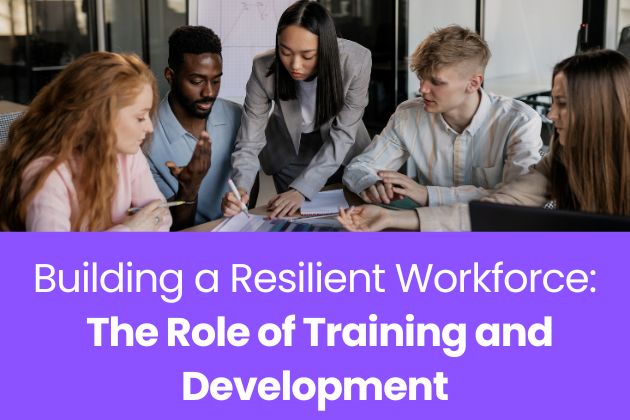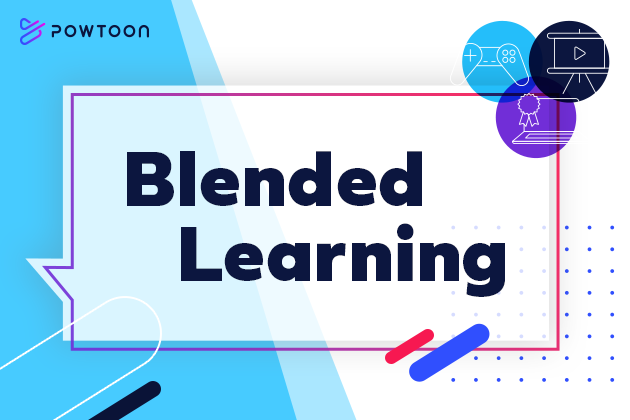
Building a Resilient Workforce: The Role of Training and Development
A resilient workforce, nurtured through effective training and development, doesn’t allow challenges to steamroll it. On the contrary, when a workforce is resilient, its members identify creative solutions to problems that might seriously threaten a weaker workforce.
Do you fear your current workforce isn’t as resilient as it should be? This isn’t necessarily something you need to worry about if so. Through proper training and development, a workforce can become resilient, giving your company a unique edge that many organizations lack.
The Foundation of Workforce Resilience
All workforces face challenges. In the wake of the Covid-19 pandemic, it’s clearer than ever that sometimes, those challenges are both significant and unexpected.
A resilient workforce is simply one that can positively adapt to new difficulties and adversity. Benefits of a resilient workforce include:
- Minimizing the chances that individual employees will fall prey to burnout, an experience so common 77% of workers surveyed state they’ve had to cope with burnout in their current jobs
- Giving your company a competitive advantage, particularly when facing challenges that affect your entire industry
- Boosting overall employee engagement and reducing costly turnover
- Allowing your company to thrive when disruptive shifts change how you do business
- Promoting greater collaboration across teams
Those are just a few examples. Generally, a resilient workforce is a happy and healthy one.
(Literally. Evidence suggests if an employee is a member of a resilient workforce, their physical health may be less likely to suffer due to their job.)
The Role of Learning and Development in Building Resilience
Resilience isn’t necessarily an innate quality that some people have, and some people don’t. Although there are certain individuals who appear to be naturally more resilient than others, through training and development, workers can develop resilient qualities.
A workforce is often more likely to be resilient when its members have the skills and expertise necessary to navigate new challenges efficiently. Even if an employee doesn’t currently have the skills necessary to handle an unexpected task, if they’ve been taught to cultivate a growth mindset, they might at least know they have the potential to develop the necessary skills.
Such a mindset allows workers to rise to the occasion when faced with new circumstances or struggles. A worker who hasn’t undergone sufficient training might instead admit defeat before even attempting to solve a new problem.
Fostering Employee Engagement and Loyalty
The importance of employee training and development can’t be overstated. Along with promoting resilience, consistent training equips employees with the skills they need to grow in their careers. Surveys indicate that employees are more likely to be engaged and loyal if they feel their jobs offer them opportunities for growth.
Addressing Safety and Well-Being Through Training
The role of safety training within an organization’s training and development strategy can directly and positively contribute to workforce resilience. Naturally, a workforce can be said to be resilient if its members generally don’t experience health struggles or avoidable injuries.
Training and development with an emphasis on safety can help employees develop proactive mindsets, encouraging them to identify risk factors and address them before they cause accidents. Truly thorough training could also provide employees with guidance on how to maintain their mental and emotional health. Be aware surveys reveal that employees also tend to be more engaged when they feel their employers prioritize their safety.
Leveraging Diversity and Inclusion in Learning Initiatives
Not every single member of a resilient workforce necessarily needs to possess all the same strengths. What makes a workforce resilient is a combination of all the strengths different employees offer.
That’s why embracing the value of diversity is critical. Quite simply, employees from certain backgrounds may possess strengths that employees from other backgrounds lack. Ways to promote a resilient workforce through diversity include:
- Building teams that are diverse in nature
- Actively encouraging employees to share perspectives and ideas that may conflict with “traditional wisdom”
- Expanding the role of diversity training within an organization’s training and development strategy
- Including diverse characters in training videos and other such internal media and documents
Team leaders and employees should also undergo training to identify and correct implicit biases. Understanding one’s own biases may be key to removing roadblocks that prevent diversity from taking root within a company culture.
Developing a Comprehensive Learning and Development Strategy
Understanding the importance of employee training and development in regard to workforce resilience doesn’t merely involve generally stating your intention to boost training initiatives. You need to get specific, focusing on the areas where you think your workforce’s skills or strengths are lacking. Once you’ve done so, you can develop thorough plans for addressing these gaps.
Measuring the Impact of Learning and Development Initiatives
Identifying your workforce’s strengths and weaknesses is just one step you may take when defining your training and development strategy. You must also identify key performance indicators you can track and measure to confirm whether your strategy is yielding the intended results.
The specific KPIs you decide to track will vary depending on the strengths you want your employees to develop. It’s wise to solicit feedback from team leaders as you implement your strategy, continuing to make changes accordingly.
That’s critical! You should never assume your workforce is “resilient enough.” Instead, you should strive to always make improvements. If you do, your team will only grow stronger and stronger.
Enhance Your Training and L&D with Powtoon
A training development strategy is only as effective as your chosen training and development materials. Video is often useful as a training and development tool because it allows you to consistently deliver the same training programs and lessons to new employees.
Don’t worry if you lack video production experience or a video budget. With Powtoon, creating training and development videos is simple and affordable. Learn more by signing up today!
Latest posts by Hanna Abitbul (see all)
- How to create an AI avatar - September 25, 2024
- How to Set Realistic Business Goals for 2025 - September 24, 2024
- Best AI script writers in 2024 - June 28, 2024
- How to write a script with AI - June 27, 2024







